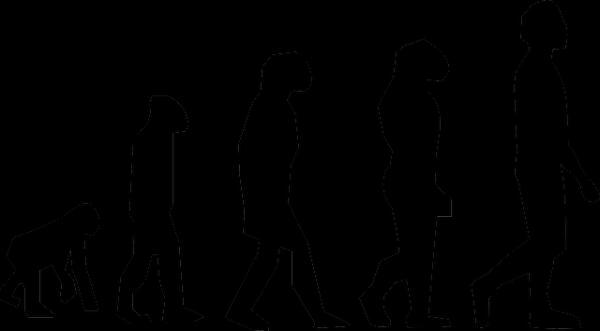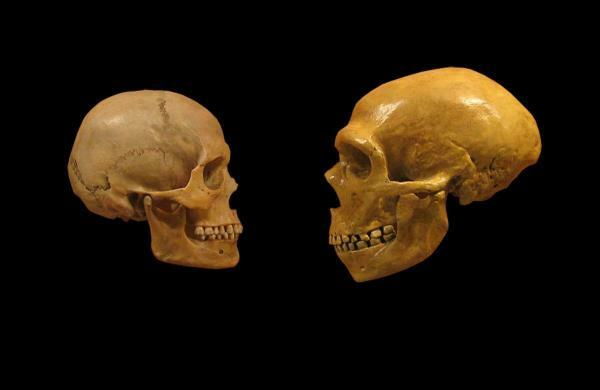Stages of human evolution

It is known as hominization to the process of evolution and transformation of the human being throughout history from its most remote ancestors. In a general way, we could say that there is a common trunk between primates and humans and that at some point we as human beings take a different direction which is the one that ended up differentiating us from the primates. Next, in this lesson a TEACHER offers you a short summary of the stages of human evolution so that you understand where we come from and why we are currently so evolved.
Hominids is the group to which humans belong and they can be classified into two genres:
Australopithecus
That presents physical characteristics very far from the current man. Within this first group we find three types of different species Australopithecus Afarensis (the most primitive), Austrolopithecus Africanus Y Austrlopithecus RobustusThese last two existed more than 4 million years ago. The three races could be said to differ from the primates above all by the bipedal posture and not having large teeth.
Homo
On the other hand, we find the group of the homos that appeared about 2.6 million years ago and it is to which we currently belong as human beings, being perhaps an evolution of the previous race. They say that the first hominids would have inhabited the area of East Africa.
We start this short summary of the stages of human evolution speaking of the homo gender, that is, the group to which we belong. The genus Homo generally groups all the fossil remains that have been found and that contains its own characteristics, such as the fact that it remains more or less upright, walk on both feet and have a bigger brain than that of primates.
Within this group we we find several species and they are:
Homo habilis
It is the oldest species within the homos since they arose more than two million years ago being contemporaneous with Australopithecus Africanis and Australophitecus Robustus.
They are named for their skill in making sharp instruments of stone to cut both plants and meat and break bones rich in phosphorus, these being the main foods of your daily diet. The differences with the Australophithecus family were that they had a greater cranial volume and a not so curved posture.
Homo erectus
Unlike the previous one that was only restricted to the area of Africa, this is a species that already extends to Asia and Europe. It also showed a greater evolution in the use of stone tools and utensils such as axes, knives, scrapers, and also characterized by being the first to make fire.
It is called erectus for having a more erect position when walking, reaching 1.8 meters high. They were characterized by having the head articulated by the spine, hence they leaned forward to walk, they also had a solid jaw.
Homo Neanderthalensis
They are so named because the first fossils belonging to this species were found in the Neander Valley (Germany). The stature in this case decreases compared to the previous one, 1.60 meters in height, yes, with a more robust complexion and with a more flattened skull in the cervical part, forehead leaning back, slightly accentuated jaw and nose big.
These they lived between 120 and 135 thousand years and one of the hypotheses that are given for their disappearance was that of a huge climate change that ended up exterminating them. It is also said that until now it had been the most sociable species and that it was their custom to bury their dead. In this other article by a PROFESSOR we discover the Neanderthal man characteristics.

And we finish this short summary of the stages of human evolution to now talk about the homo sapiens, the current species to which we humans belong and that arose around the year 35,000 a. C. being the first specimens discovered in the cave of Cromagnon (France).
Homo sapiens was taller than the previous race and was characterized by having a longer skull, a larger forehead, and a more rounded jaw. Homo sapiens is also responsible for the existence of a further refinement of techniques to obtain food, as well as a better social organization, in religion and in other types of cultural manifestations.
Homo sapiens eventually gave rise to human races, that these are human groups with certain obvious biological characteristics, such as the color of the skin, the eyes, the different types of nose, hair….
The human races of today are nothing more than the result of having developed in a specific area, adopting the media at all times. The differences between them do not mean that some are superior or inferior to others, from the point of view We can recognize at least four racial hierarchies, the Negroid, the Mongoloid, the Caucasoid, and the Australoid.
Here we analyze in detail the characteristics of Homo sapiens.



